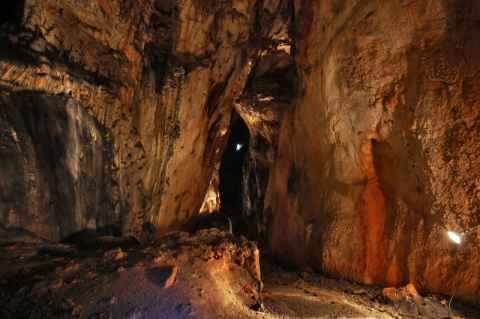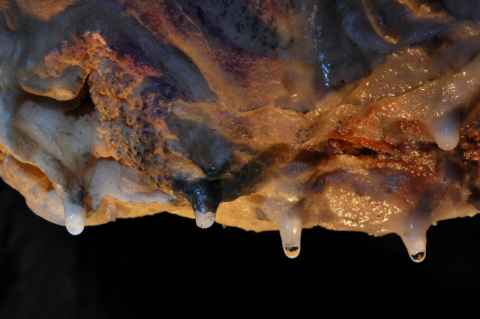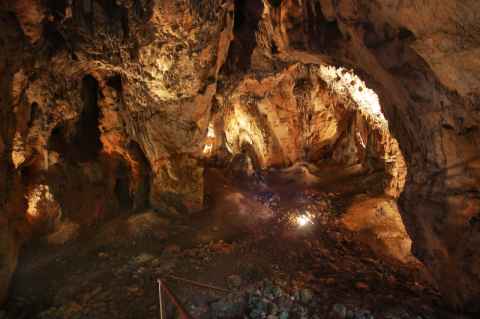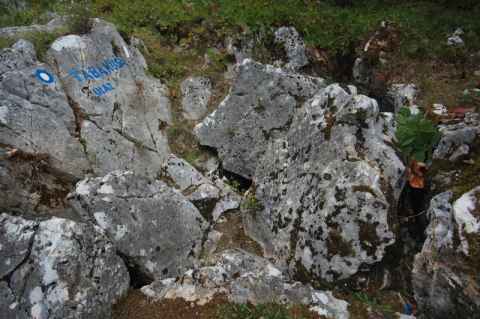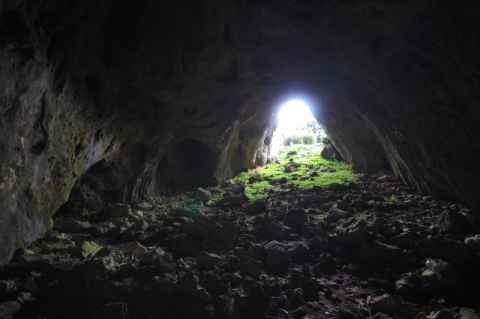Grabovača Caves
Grabovača is a national park just south-west of Perušić. It is a fairly new establishment, only being two years old. The cave park, as it is called, covers one big cave, a couple of small ones, and a vertical shaft about fifty meters deep.
Samograd
The largest cave is called Samograd, meaning "self-built". It is about 240 meters deep and consists of four huge halls. The first recorded exploration of the cave took place in 1835, and was done by Austrian and Italian cavers. The "recording" here consists of writings on the cave walls consisting of the date and a list of people. That vandalism (let's call it for what it is) has since been repeated by some teams of cave explorers. It wasn't until 2007 that the cave park was formed and the cave itself declared a protected geomorphological feature.
I was impressed by the fine detail of the rock formations during my first guided trip through the Samograd cave. Since the tour was just a simple walk to the bottom of the cave and back up, there was no time to stop and do some careful photography. For my next tour I talked to the guide and asked if I could be given a special tour with some more time at each spot in the cave. This was granted, and for my second tour I had brought along a close-up lens, and managed to jury-rig a Nodal Ninja III-2 into a macro focusing rail, hoping to get some great macro shots out of the tour. However, it proved harder than I thought to get this setup working. First, even though the cave is vast, movement is restricted to a narrow path, maybe half a meter across. Second, the path is very uneven, making it very difficult to set up a tripod and to make it stable. Third, when set up, getting the distance from the camera to the object proved very difficult. Fourth, working in these cramped conditions is just plain difficult. Just as I thought I had the camera set up, I'd brush against the tripod, which would promptly start to fall over, and once righted, would have moved a little bit.
In the end it came down to a lack of time. I tried for the better part of twenty minutes to get a photo of a small, budding stalactite[1], but failed miserably. The choice was between getting this one shot, or moving on to the other four or five spots that I had planned on visiting during the tour. I admitted defeat and chose the latter. The close-up lens was not used again.

This is the end of the cave. The first explorers spoke about an underground lake being about 50 meters in length here. The vaguely mushroom-looking rock to the left is a part of the ceiling that has fallen down since, and it is believed that the lake was drained through a crack or other opening that may have opened in connection with that event.
2010-09-17 12:29
Other Caves
There are other, smaller caves in the park. While the Samograd cave can only be entered with a guide, these caves are open to the public without guides. It should here be noted that only one of these were something that I felt comfortable entering on my own - all the others had either cramped entrances or parts where you had to squeeze through.


